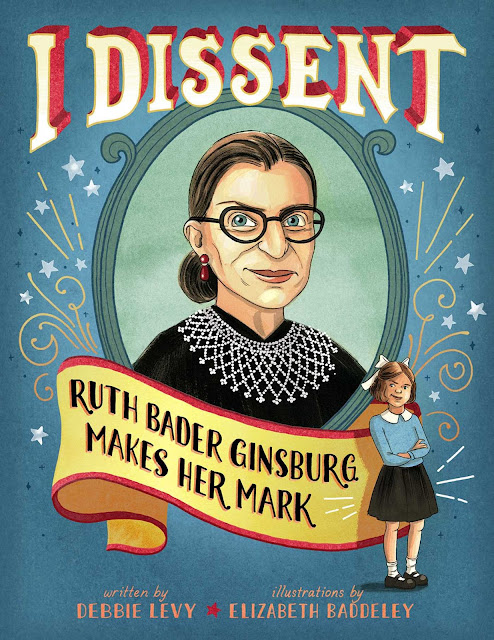

The author (who, it should be noted, formerly practiced law) reports that now Justice Ginsburg is the oldest member of the Court. She began to wear two different collars over her robes: one when she agreed with the Court’s decision, and a different one when she dissented. In 1993, she was appointed to the Supreme Court by President Bill Clinton, becoming the second woman ever, after Sandra Day O’Connor, to serve on that body, and the first Jewish woman ever to be appointed to the Court. With each victory, women and men and girls and boys enjoyed a little more equality.” “Ruth did not win every case, but she won enough.

Ruth also went to the Supreme Court to advocate for rights for women, arguing her first case in 1973. Finally a judge hired her, and then she became a law professor. Men did not want to work with a woman she was a mother (law firms thought that would distract her) and she was Jewish, at a time when many firms didn’t hire Jews. Nonetheless, after graduation, no one would hire her. But she tied for first place in the class. At law school, Ruth was one of only nine women in a group of 500 men. In all of these areas, Ruth protested whenever she could.Īt college, she met Marty Ginsburg, who agreed that Ruth should have the opportunity to go to law school, and eventually they married. She wanted to sing, but her teacher said she could not carry a tune. She was made to learn sewing and cooking in school, while boys got to take shop and work with tools. She was told not to write with her left hand, even though she was left-handed. Ruth objected to prejudice of any kind, and to the other injustices she encountered in school. As the author wrote: “She never forgot the sting of prejudice.” Ruth’s mother disagreed, and took her to the library where she discovered stories of female heroes.īut Ruth had another obstacle to overcome: whenever they left the city, they encountered signs barring entrance to Jews (as she was), blacks, Mexicans, etc. She then takes us through Ruth’s childhood in Brooklyn, New York, in a neighborhood full of immigrants, who, while different in some ways, in one way were the same: boys were expected to grow up to do big things, and women were expected to find husbands.

This is how Ruth Bader Ginsburg changed her life – and ours.” “You could say that Ruth Bader Ginsburg’s life has been. On the other, we see her as a much older disputatious justice. The author begins her story by showing, on one side of the 2-page spread, the future Supreme Court Justice, born in 1933, as a disputatious young girl.


 0 kommentar(er)
0 kommentar(er)
